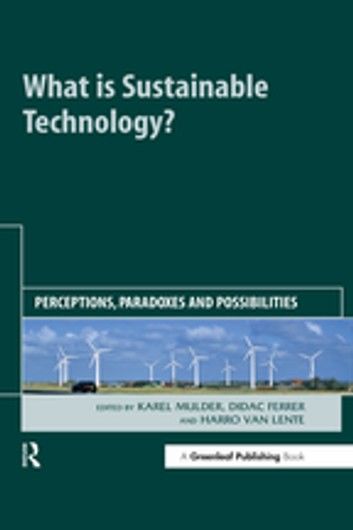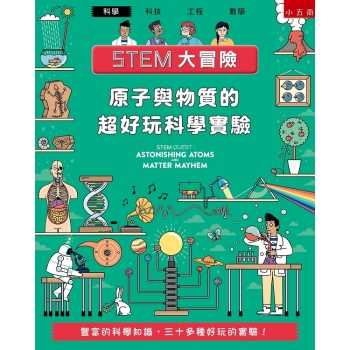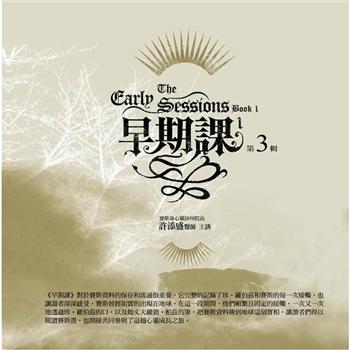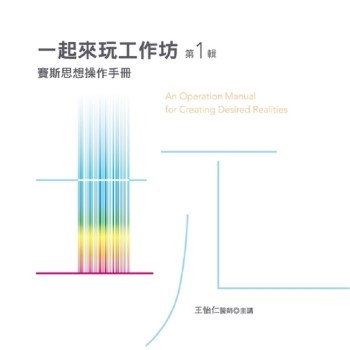| FindBook |
有 1 項符合
What is Sustainable Technology?的圖書 |
 |
What is Sustainable Technology? 作者:Karel Mulder,Didac Ferrer,Harro van Lente 出版社:Taylor & Francis 出版日期:2017-09-08 語言:英文 |
| 圖書館借閱 |
| 國家圖書館 | 全國圖書書目資訊網 | 國立公共資訊圖書館 | 電子書服務平台 | MetaCat 跨館整合查詢 |
| 臺北市立圖書館 | 新北市立圖書館 | 基隆市公共圖書館 | 桃園市立圖書館 | 新竹縣公共圖書館 |
| 苗栗縣立圖書館 | 臺中市立圖書館 | 彰化縣公共圖書館 | 南投縣文化局 | 雲林縣公共圖書館 |
| 嘉義縣圖書館 | 臺南市立圖書館 | 高雄市立圖書館 | 屏東縣公共圖書館 | 宜蘭縣公共圖書館 |
| 花蓮縣文化局 | 臺東縣文化處 |
|
|
Designers of technology have a major responsibility in the current age. Their designs can have tremendous effects on society, in both the short and the long term. In fact, sustainable development itself has all the characteristics of a design project, albeit a vast one. But a failed product design here will be not just be unsuccessful in the market – it will have far-reaching consequences. It is our common responsibility to make the project successful.
Technology has played an important role in creating the problems that we now face; but it will also play an important role in solving them. But this does not mean the technological fix will be easy. How do we allocate resources and attention when there are myriad issues under the umbrella of "sustainable development" currently in competition with one another? How do we arrive at precise specifications for the sustainable technologies that are to be developed and, furthermore, reach consensus on these specifications? What if our sustainable technological solutions aggravate other problems or create new ones? And, because sustainable development is all about the long-term consequences of our actions, how do we assess the effects of modifying existing landscapes, infrastructures and patterns of life?How could we be sure in advance that the changes that new technologies bring will make our society more sustainable? These dilemmas and paradoxes are the subject of this provocative book.
Sometimes the claim that a technology is sustainable is made in order to make the technology acceptable in the political process, as in the case of nuclear energy production, where the claims of "sustainability" refer to the absence of CO2 emissions. In the case of biofuels, claims of sustainability have led to a "fuel or food" debate, showing that sustainability has counteracting articulations. And the well-known rebound effect is observed when increased resource efficiency can create a stimulus for consumption. What is Sustainable Technology? illustrates that the sustainability impact of a technology is often much more complicated and ambivalent than one might expect. Making improvements to existing designs is not the technological challenge that will lead to real solutions. We mustn't look to change a part of a machine, but rather the machine as a whole – or even the whole system in which it functions. It is these system innovations that have the potential to make a genuine contribution to sustainable development. What is Sustainable Technology? will help all those involved in designing more sustainable technologies in determining their strategies. It does so by presenting case studies of different technologies in contrasting contexts. Each case asks:
-
What articulations of sustainability played a role in the design process?
-
What sustainability effects did this technology lead to?
-
Who was affected, where, and when?
-
Could the designer have foreseen these consequences?
-
How did the designer anticipate them?
-
How was societal interaction dealt with during the design process?
Finally, the authors reflect on future options for the sustainable technology designer. They argue that an important first step is an awareness of the multitude of sustainable development challenges that play a role in production, use, recycling and end-of-life disposal. What is Sustainable Technology? will be essential reading for product designers, engineers, material scientists and others involved in the development of sustainable technologies, as well as a wide academic audience interested in the complexities of the sustainable design process.
|











